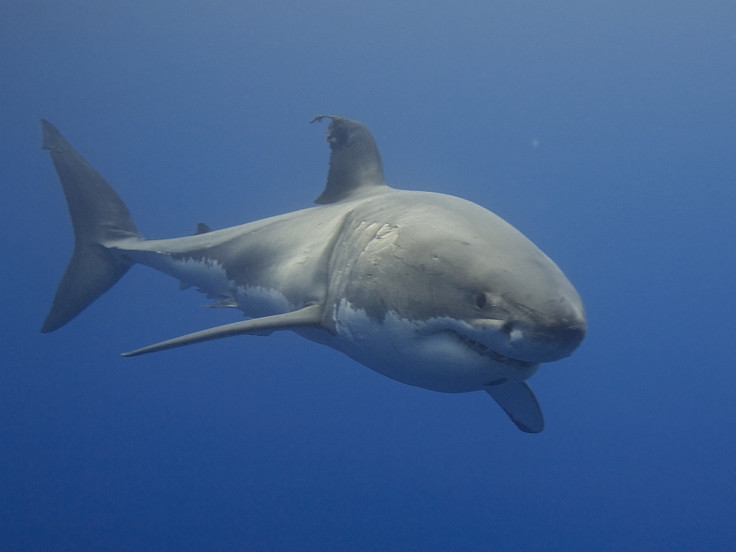Understanding great white sharks: SharkCam robot reveals hunting behaviour deep below the surface

Sharks use the clear water around Mexico to attack their prey from below, says researchers. Unlike most areas of the ocean, where sharks are seen to attack near the surface, these marine predators stalk from the ocean depths, sneaking up from below.
Experts from the Woods Hole Oceanographic Institution used the 'REMUS SharkCam' to track shark behaviour. The research, published in the Journal of Fish Biology, used data from the team's field trip to Guadalupe Island, Mexico, in 2013.
They tagged and tracked four sharks over a six day period, and also collected more than 13 hours of video footage. One of the sharks they tagged was a 21-foot long great white – more than two and a half times the tallest human in the world.
"We wanted to test the REMUS SharkCam technology to prove that is was a viable tool for observing marine animals – sharks in this case," said Amy Kukulya, one of the principle researchers. "And to collect substantial data about the animal's behaviour and habitat."
The researchers suggest that the clear Mexican waters offer sharks the ability to use the visibility to their advantage. They ambush and disable seals from below, so their dark colour blends in with the dark ocean bottom.
"Predation events are rarely witnessed," wrote the authors. "Virtually all of the [previously] published observations of predatory behaviour are based on surface interactions." However, in this case, the researchers show that very little predation occurs near the surface in Guadalupe Island. This is the first study to record shark predation at such large depths.
The study also gave scientists the chance to observe sharks during predation at deep ocean depths. Tracking animals as far down as 100m, researchers observed 30 interactions with the SharkCam from 10 individual sharks, including approaches, bumping and nine aggressive bites - as seen in the video.
"This SharkCam groundbreaking technology offers a new and innovative tool for scientists to better understand the fine-scale behaviour of marine animals," said Kukulya. "There is currently no other method in the world that can get imagery of white sharks at depth in the open ocean."
© Copyright IBTimes 2025. All rights reserved.






















